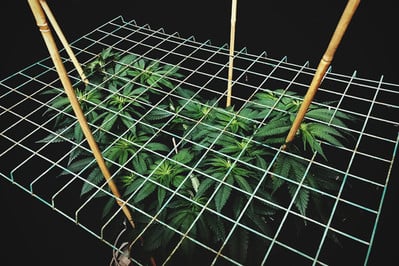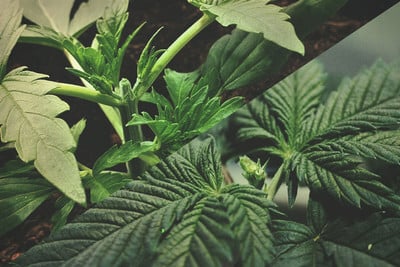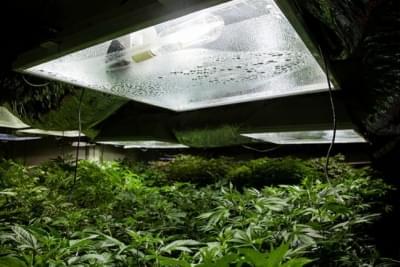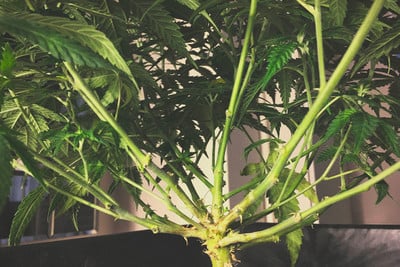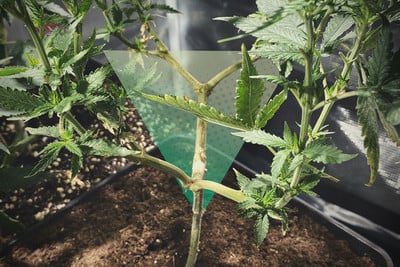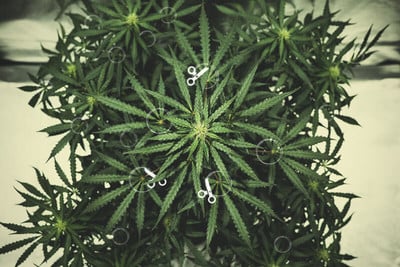.

Understanding Under-Canopy and Side Lighting for Cannabis
Light is the fuel that makes cannabis grow, and when all else is right, adding supplemental lighting to your cannabis grow can help to improve bud production and maximise final yields. Follow along to learn when it's appropriate to use under-canopy or side lighting for cannabis.
What can you do if you’ve mastered all the training methods, learnt exactly how to feed and water cannabis plants, and created the perfect environment for them? How can you still improve bud development and final yields?
Under-canopy and side lighting can be used to maximise light exposure to cannabis crops, pushing yields to their peak and getting even those stubborn buds lower down on the plant to grow fat. However, this is only advantageous if all other environmental metrics are satisfied. Though simple in itself, additional lighting is best suited to advanced growers. Keep reading to find out why, and to find out how to utilise additional lighting for growing weed.
Contents:
- Understanding under-canopy and side lighting in cannabis cultivation
- What is under-canopy lighting?
- What is side lighting?
- Benefits of growing weed with additional lighting
- Potential downsides of using additional lighting when growing weed
- How to instal and use additional lighting when growing cannabis
- Are side lighting and under-canopy lighting always needed when growing weed?
- Side lighting: a handy way to boost yields
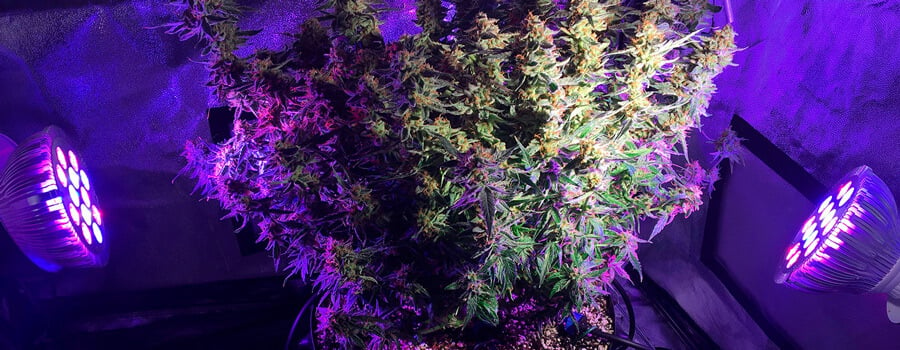
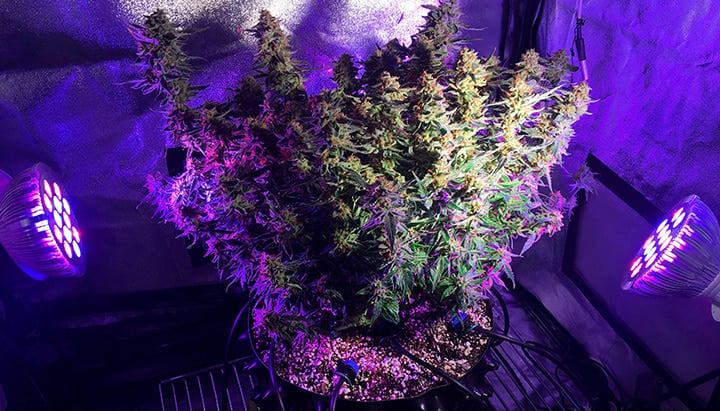
Understanding Under-Canopy and Side Lighting in Cannabis Cultivation
Placing lights below the canopy of a cannabis grow, or lighting it from the side, can help to maximise yields and generally improve plant health by ensuring all parts of the plant are exposed to adequate amounts of light.
When growing indoors, the most common practice is to hang a grow light directly above the crop’s canopy and shine light down upon it. Generally, with good enough lights, this is a suitable practice that should result in happy, healthy plants. However, if plants are particularly tall or bushy, sometimes the lack of light penetration to the lower growth can be an issue.
Cannabis plants exhibit apical dominance anyway, meaning that the main cola grows at the very top of the plant—because in nature this is most likely to catch pollen drifting on the wind. When growing indoors, lighting that sits permanently above plants can exacerbate this imbalance, meaning lower bud sites become underdeveloped. Side lighting, or lighting under the canopy, can remedy this.
Using lighting such as this is an easy fix, but it isn’t always the most budget-friendly option. Various training techniques can be employed for free that should even out light coverage, without you having to invest in more lights.
What Is Under-Canopy Lighting?
Under-canopy lighting is a general name for lighting that illuminates a plant from beneath the canopy, and it can take various forms. Most commonly, under-canopy lighting takes the form of strip lights that run along the floor and shine directly up onto the underside of leaves. This entirely mitigates the issue of certain leaves blocking others from absorbing light.
Under-canopy lighting is suitable for grows that need additional lighting but are limited in space.
Why Some People Grow Weed With Under-Canopy Lights
Reasons that people use under-canopy lighting:
- Even light distribution for dense crops: If you have particularly bushy plants, or many plants in a cramped grow tent, then light that is coming from above will usually only illuminate the top of the canopy, leaving the underside in darkness. With very dense crops, this can be a problem.
- When lit only from above, the main, top cola may grow very large, but the lower down the plant you go, the smaller the buds will become. This can lead to “popcorn” buds, which, as the name suggests, are very small buds that are small and fluffy. Under-canopy lighting will ensure that lower buds still develop to a good size.
- Efficiency: Illuminating plants in their entirety will help them develop healthily and vigorously, leading to greater efficiency all round. If plants don’t get enough light, they can’t photosynthesise, regardless of how optimal all other conditions are. So adequate lighting is fundamental to a good grow.
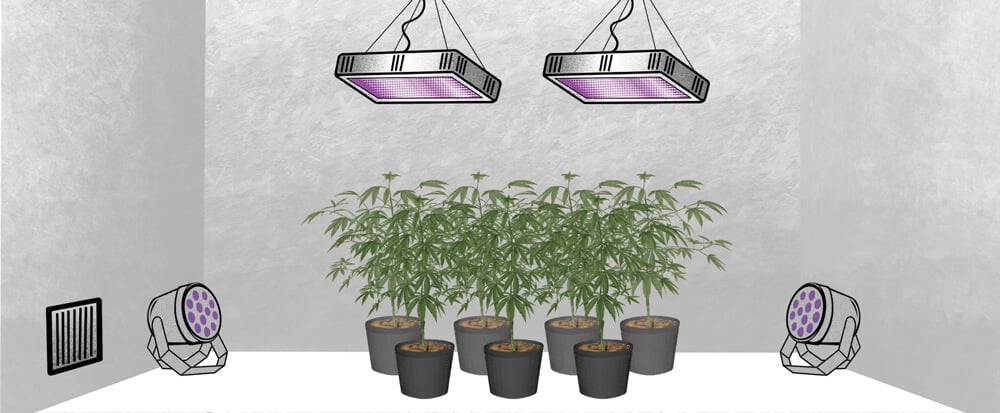
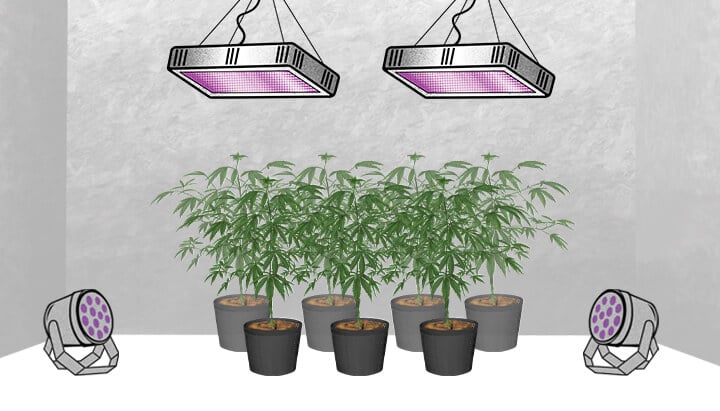
What Is Side Lighting?
Most commonly, people use CFL or LED side lighting, which employs tubular bulbs or strips that hang down beside plants, evenly lighting them from the sides—not directly beneath.
Alternatively, some growers use lighting that moves throughout the day, imitating the movement of the sun and ensuring that all parts of the crop get a good dose of direct light. For most indoor growers, though, this moving lighting is probably unnecessary.
Side lighting doesn’t just improve yields, but helps to keep plants healthy. If part of a plant doesn’t get adequate light, then not only will it not photosynthesise efficiently, but it will be unable to properly process nutrients, which can lead to toxicity in extreme cases. So getting light to all regions of your crop should help to keep it in good health.
Given the configuration, side lighting is best suited to those working with a little more space.
Why Some People Use Side Lighting to Grow Weed
- Very large plants
- If growing very large plants, then the lower colas may be so far from the canopy that even if light penetrates, it’s just not that strong. Using side lighting can help to get an even spread of light to tall plants.
- Alongside CO₂
- Some growers supplement grow spaces with additional CO₂, which plants need for photosynthesis. As they are able to photosynthesise more efficiently with a constant supply of CO₂, plants can make use of the extra light provided by side lights.
- Bud uniformity
- Side lights mean that buds will grow fairly evenly across an entire plant, rather than being disproportionately big at the top and popcorn-sized at the bottom.
Benefits of Growing Weed With Additional Lighting
In certain situations, growing cannabis with additional lighting can be incredibly helpful. There are two general situations when it should be considered:
- When a grow is very dense, and light from above can’t adequately penetrate the canopy.
- When all other factors are honed in, and side lighting can help to further optimise a grow setup.
Increased Yield
Ultimately, most cannabis growers want big yields. And once growers have become very proficient in the fundamentals of growing, they tend to look for new ways to further increase yield. Well, side lighting and under-canopy lighting can do just this.
From preventing popcorn buds in bushy grows to making sizeable buds even bigger in conventional grows, additional lighting can often increase yield. That being said, novice growers should focus their energy on getting the basics right before spending money on even more lights. Side lighting will not make up for bad practice, but will complement good practice.
Better Light Distribution
Obviously, additional lighting from under the canopy will distribute light more evenly across your crop. Whether this is a meaningful benefit will depend on the two factors listed above. Optimal light distribution is always a good thing, but it’s down to you to decide whether it will make enough of a difference to employ.
Superior Plant Development
Generally, plants that have adequate and even light exposure will grow into healthier specimens. While this ultimately means fatter buds, it comes with other knock-on benefits as well. Plants may become generally larger, with healthier colouration and more even development across the board. Plus, healthier plants are more resistant to pests and diseases, which is a great help.
Greater Bud Uniformity
Instead of having huge buds at the top and popcorn buds at the bottom, why not have huge buds at the top and big buds at the bottom? Side lighting will increase bud uniformity, meaning larger yields and more attractive plants.
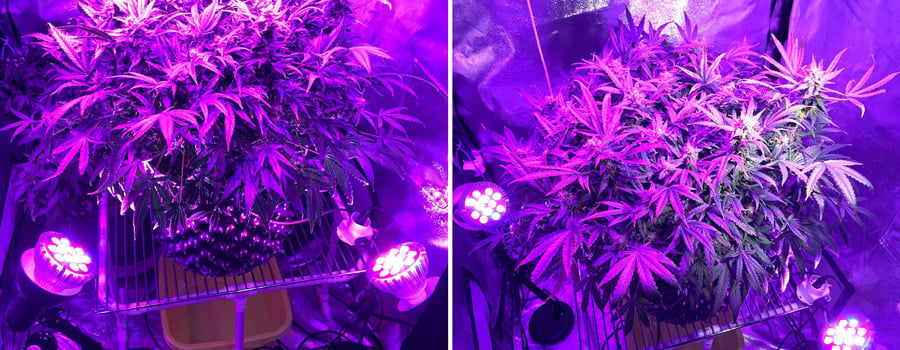
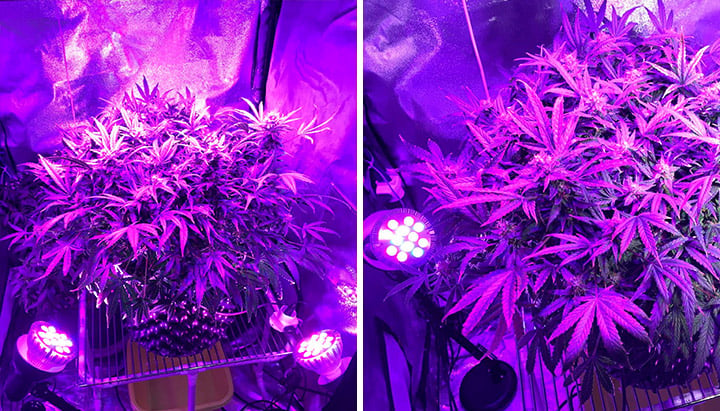
Potential Downsides of Using Additional Lighting When Growing Weed
It’s not all good, though; there are some considerable downsides to using side lighting. In some cases, it’s really not worth it, which is why you should be careful to determine whether it’s beneficial for your setup.
Initial Setup Cost
More lights costs more money, and grow lights can be expensive. If they’re necessary, or they will really improve results, then the cost can be worth it. But where it's unnecessary, and growers would be better off honing more basic skills, side or under-canopy lighting can be a waste of money that makes little difference come harvest time.
Running Cost
Not only do you have to buy new lights, but you have to run them too. LED side lights aren’t too expensive to run, but other types, such as HPS, can be.
Heat Management Challenges
Adding more lights to a small, enclosed space will inevitably push temperatures up. This can be harmful to plant development and, if it gets really hot, can become a fire hazard. In general, you want to keep electrical, heat-emitting equipment to a minimum in a grow space. Therefore, a set of new lights may not be what you need.
Light Burn
There’s such a thing as too much of a good thing. While plants love light, giving them too much, or positioning it too close, can actually burn them. This can be from heat or from UV. Light burn is counterproductive and will result in a waste of money and damaged plants. So make sure you have enough space to add more lights to a grow while keeping them a safe distance from your plants.
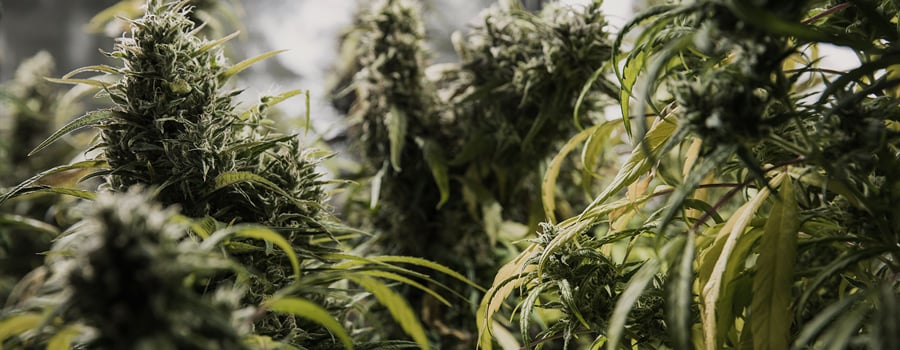
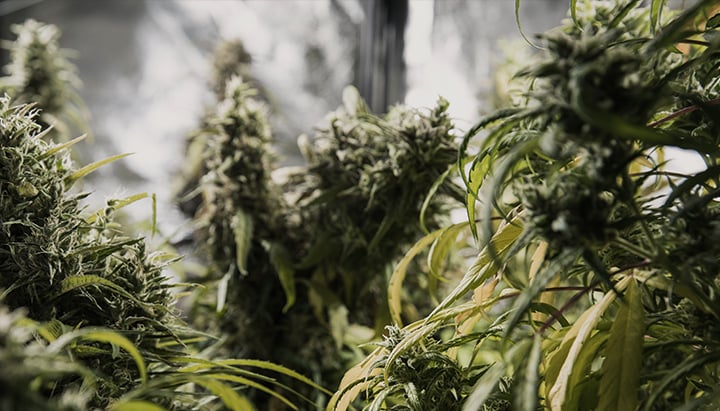
How to Instal and Use Additional Lighting When Growing Cannabis
If you think that additional lighting would help you to get more from your crop, the following section will give you tips on how to instal side lights and under-canopy lights for cannabis.
Choosing the Right Lights
First, you need to choose the right lights. In fact, you need to ask yourself if you really need additional lighting. If you decide you do, then what’s better for your circumstances: under-canopy lighting or side lighting?
Under-canopy lights are suitable for very compact grows where you can’t fit side lights in, or large grows where you can run a strip along a long line of plants.
Side lighting is good for grows with enough space to place lights around the sides of plants. Side lights can work with a single plant, or with many.
You also have to consider the different types of light available. High-quality LEDs are probably the best these days. These are flat and compact, last for tens of thousands of hours, come with fine-tuned frequencies, and hardly give off any heat, meaning they don’t pose the dangers associated with HID lights. Otherwise, CFL tubes are also popular, especially for side lighting.
Installation
If installing under-canopy lighting, it’s pretty simple: just run it beneath the plants. Good-quality, purpose-built under-canopy grow lights should be waterproof. Fail to choose waterproof lights, and you risk a serious accident.
Side lighting is a little different. Some side lights you can hang from rigging, using cable ties or ratchet straps. Otherwise, for LED strips, you might have to build some kind of scaffolding to fix them too. This needn’t be particularly tough, as these lights are very light. The easiest solution is to build a scaffold out of wood.
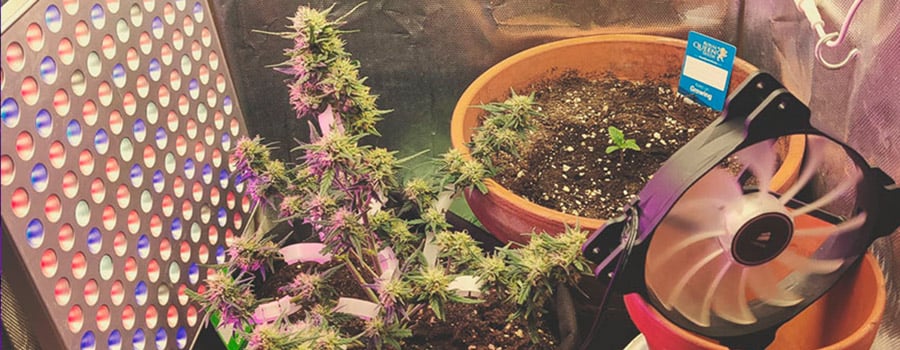
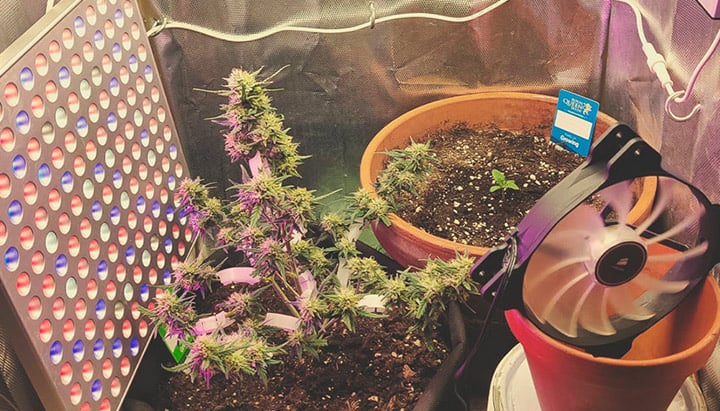
Adjusting Lights During Stages of Growth
You might be tempted to blast your plants with side lights or under-canopy lights as soon as they come through the soil—but this is a mistake. Plants that are in the early vegetative stage contain light-seeking phytohormones, which cause the plant to grow towards light. In nature, this helps plants to find their way out of the undergrowth and up into the embrace of the sun.
So if you use side lights or under-canopy lights during the early or mid-veg stage, it will distort how the plant grows. Instead, you should only use them during the late vegetative stage and flowering stage, or even just the flowering stage.
Moreover, during earlier stages of growth, plants won’t be that big and their canopies won’t be too dense, so additional lighting should be unnecessary.
Are Side Lighting and Under-Canopy Lighting Always Needed When Growing Weed?
Not at all. In fact, for most growers, it’s probably overkill. As previously mentioned, it’s only really suitable when growing extremely tall or dense plants, or for very experienced growers who can actually make use of the added benefit. For the average grower, there’s probably no need to use supplemental lighting.
Furthermore, experienced growers are most likely to make use of additional lighting when they employ the use of supplemental CO₂.
Alternatives to Side Lighting When Growing Weed
For most, even experienced, growers, there are cheaper alternatives to side lighting. Not only are these alternatives cheaper, but many will make much more of a difference when it comes to yield.
First, you can use reflective materials to help light penetrate the deeper reaches of the under-canopy. Most grow spaces use some reflective material on the walls—this is common practice. But you can also place reflective material on the floor, which will help to bounce the last dregs of light back up to the lowest reaches of your plants.
Second, certain training methods are designed to maximise light exposure and bud production. For example:
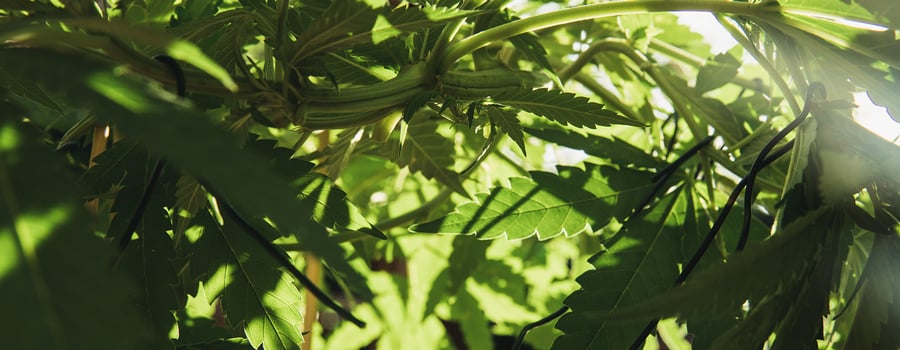
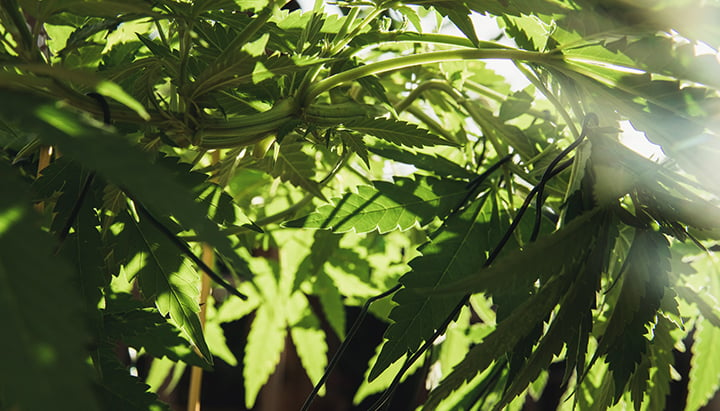
- Low-stress training (LST): This is great for novices who want to try out training. LST is a safe and simple training method. It involves tying down the growing tip of the plant while it is young so that it grows horizontally. This makes the canopy much wider, exposing more of the plant to light and promoting more even growth across the bud sites.
- Topping: Topping is a high-stress training technique that serves to counteract the apical dominance of cannabis plants. By cutting off the main growing tip during the veg stage, you encourage the plant to recover with two main growing tips instead, which will eventually become two main colas. Repeating this process a couple weeks later will double the cola sites one more.
- SOG/ScrOG: Sea of green (SOG) and screen of green (ScrOG) are two training techniques that seek to maximise light exposure over the surface area of your grow. SOG involves growing many small plants and treating them all as a single canopy. While it results in a small yield per plant, it achieves a higher yield per square metre compared to growing fewer, larger plants. ScrOG typically uses a single plant, but involves weaving the branches through a horizontal mesh screen to encourage lateral growth. This creates a wide, flat canopy with equal light exposure.
Side Lighting: A Handy Way to Boost Yields
Side lighting and under-canopy lighting are both suited to advanced growers due to their relatively small benefit. Employed by unskilled growers, and they won’t make a difference. Wielded in the right hands, and some sources claim that yields can be increased by as much as 20%.
If you don’t think these additional lighting solutions are suitable for you just yet, then take inspiration from some of the other methods outlined in this article. Training methods are likely the main way that a grower can progress from beginner through to intermediate and advanced, pushing plant development to the max.


























